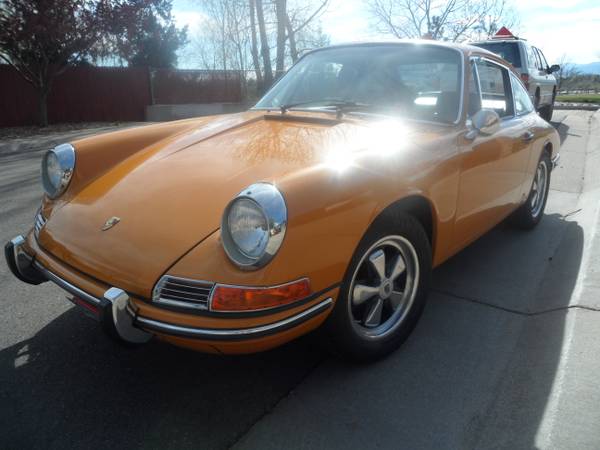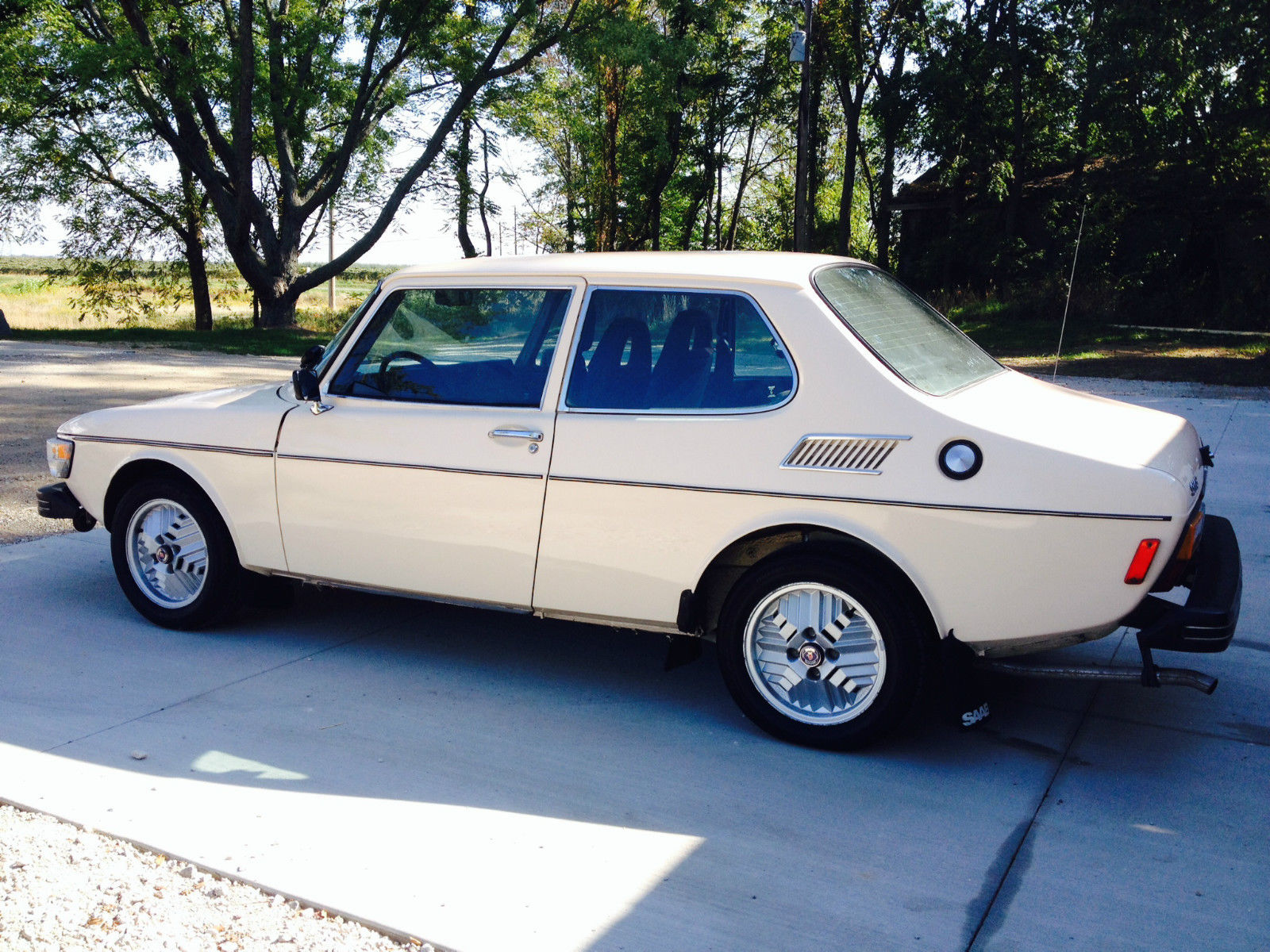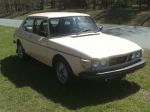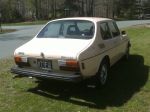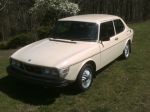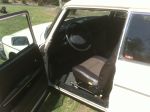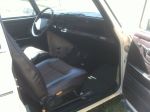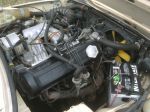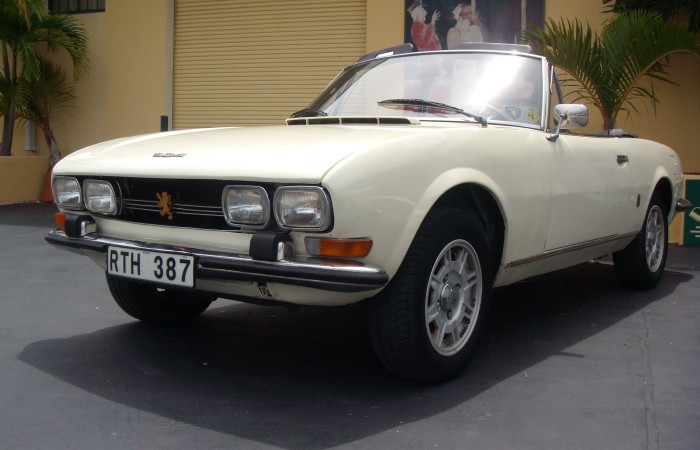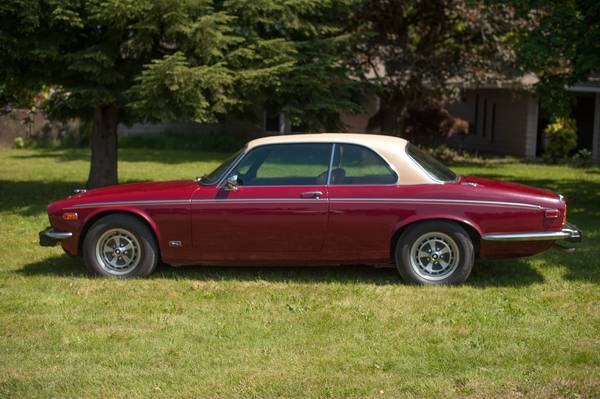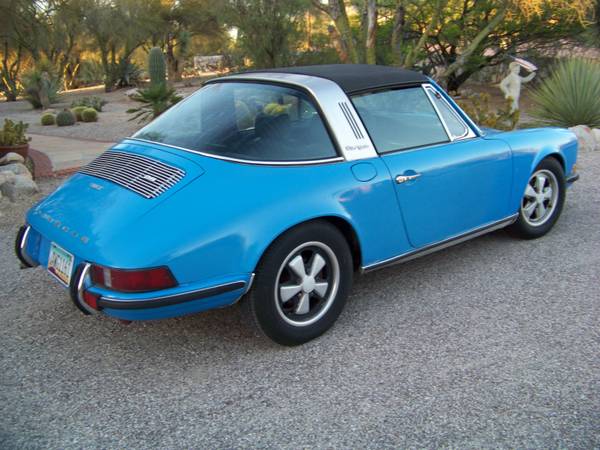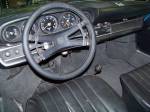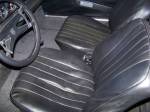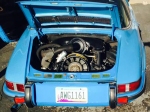While Porsche cars today are built entirely in its original Stuttgart factory as well as others in Finland and Slovakia, prior to the early 60s, its bodies were made by coachbuilders like Reutters, D’Iterien, Drauz, and Karmann before being assembled at the Zuffenhausen plant. After Porsche’s acquisition of Reutters, they continued to use Karmann for some 911 and 912 production (and later 914 and 968). There is some ürban legend that the Karmann bodies were lighter than the Porsche factory bodies, but this is more likely because most Karmann-built bodies were used in base 911, 911T and 912 production. These cars were more sparsely equipped—but only by perhaps a few kilos—than the 911S and 911L that were exclusive to the Porsche factory. In reality, a 911 built by Karmann is identical to a works one. There is also varying opinions that a 911 that’s pure Porsche should be worth more, while there’s a counter-argument that in an effort to win more of Porsche’s business, Karmann went beyond spec to build better cars. Fifty years later, it’s all minutia at best. An early 911 is highly collectible and very valuable. Period. In the last six months alone, actual sales prices have escalated an astonishing 15% and they continue to rise with even steeper growth. Simply put, there is no better investment in the automotive world—and very little outside of it—than an early 911. This example is a 1968 911 Karmann Coupe with an older restoration that has held up extremely well, with matching numbers against a Certificate of Authenticity. It is said to be absolutely rust-free with perfect paint and flawless interior. With just over 50,000 original miles on the clock and recent service that includes valve and carburetor adjustment, this is a car that doesn’t ignore these cars’ intent to be driven while looking exceptionally good. Bahama Yellow is perfect for the vintage and is a perennial favorite among Porsche collectors. It’s as good as it gets for under six figures. Find it here on Craigslist in Arvada CO for $85,000.
Page 201 of 221
A 1972 Ferrari Dino 246GT, first owned by the Rolling Stones rock star Keith Richards, is to be sold at no reserve at Coys’ auction in Monaco on Friday 9th May.
The Dino 246 is one of those rare examples that acquired the title of “collector’s car’ almost while still in production. It established itself rapidly as one of the ‘must have’ accessories of the 1970s and gained a fairly star-studded list of owners. This example on offer at Coys’ auction must represent one of the most starry as it was purchased new by the rock and roll legend Keith Richards in California in February 1972.
Already a connoisseur of fine cars by the time he took delivery of this car, Keith kept the Dino for fourteen years until 1986, and in this time he covered over 25,000 miles. He brought it to the UK in 1975 where it was registered to his address in Munro Terrace in Chelsea, London, and assigned the UK registration number GYL 157N.
Accompanying the car is a letter from the Rolling Stones’ manager Alan Dunn confirming Richards’ ownership and mileage up until April 1986. The car has since then spent an extended period in a prestigious Japanese collection.
Chris Routledge, Managing Partner at Coys, said: “A Dino offered at no reserve is rare enough in itself and would make this is a highly desirable and collectible item in its own right, but when one adds to this proven long-term ownership by rock and roll aristocracy, the Keith Richards’s car has to be the ultimate Dino and will surely give any car collector and rock enthusiast a great ‘Satisfaction’!”
The sale will also feature a 1950 Cisitalia Abarth 204 A Spyder, driven by the legendary Italian motorcycle and race car driver Tazio Nuvolari on at least two occasions in 1950. First, he raced it in the April 2nd Targa Florio, where he was sidelined by transmission failure, and then a week later in the April 10th Palermo Monte Pellegrino hillclimb, where he brought it home first in the 1100cc class. This was the final race of Nuvolari’s overwhelmingly diverse and successful career.
This car is one of four two seat Cisitalia 204 A Spyder Corsas taken by Carlo Abarth, which were the basis of Abarth & Co. Srl. This car is Cisitalia chassis number 4 and is the last one built in Italy. It was then assigned chassis number 8 by Abarth in the sequence of 204 A’s built and is the first Abarth, documented by the original Certificate of Origin retained by a museum in Italy. The car is estimated at €1,400,000 to €1,800,000.
The 204 A was designed by Giovanni Savonuzzi with spare botticella style Spyder Corsa coachwork crafted by Carrozzeria Rocco Motto and adaptable to both formula competition and, with bumpers and lights added, as a road going sports car.
Chris Routledge said: “This is an exceptional opportunity to celebrate the most serendipitous gathering of postwar racing and automobile personalities. A car with splendid appearance, impeccable history and tailored to the requirements of “The Flying Mantuan”, Tazio Nuvolari, by a master of Italian speed, Carlo Abarth. Likely to be one of the most historically important sport racing cars, this may be the only opportunity to acquire this icon at auction.”
For further details about this cars and other important lots for sale, please visit www.coys.co.uk
Saab was always a company that did things differently and to anyone who’s owned one, those differences forged a relationship like few other cars can match. From its beginnings as an automaker in the late ‘40s (spawned from an aircraft company), the cars evoked a palpable personality, instantly engaging their owners. Unfortunately, when you own not just a car, but the entire company—namely you are GM (Saab was a wholly-owned subsidiary since 2000)—doing things differently doesn’t have the same level of charm. The “overthinking” that went into even the latest cars proved too costly and simply did not meet fiscal expectations. For a brief time, Saab was saved by exotic automaker, Spyker, only for Spyker to face bankruptcy themselves months later. Sale of its Saab division was blocked by former owner GM and Saab, as we knew it for over 55 years, breathed its last breath, although a non-breathing all-electric car based on the last Saab 9-3 is said to be in production, though no details have been announced on when and where the car will be available. In the meantime, we have the used Saab market to play with. Fortunately, the cars were not only innovative, but made to last and there are hundreds on the market at any given time, with continued parts availability. To clarify, by “made to last,” they are durable (rally proven), but not necessarily reliable. The quirkiness that makes them so lovable also makes them finicky and temperamental at times. They key, as with any other car, is to find one that has been well cared for. That may seem obvious—and it is—but because Saabs were well-thought out and well-made, their flaws can be covered up. As a car that has any residual value, it’s probably best to avoid any GM-era cars (2000-2012). The cars that are seeing some appreciation are the early cars, most definitely the 92, 93, 95 and 96. The Saab 99, too, is enjoying some healthy growth, due in part to being more advanced than its predecessors in the first place and that refreshed and restored examples are increasingly coming onto the market. They also have a look that’s fast becoming iconic: the arched tail (whether in coupé or Wagonback form), the curvaceous front fender line and the four headlamp nose (this was US only but expatriated in European markets) are an aesthetic that is like nothing else on the road. This example has had a high-quality restoration in 2011, comprising of new paint in its lovely Alpine White, and a new interior. The motor is said to be original with only the occasional drip or two. The Inca wheels complete the Saab look while its original steel wheels and chrome hubcaps are included in the sale. The seller discloses the odometer stopped working at just over 55,000 miles in 2012, but estimates another 10,000 miles since. In any case, that is not much for a car that can easily go half a million with proper care. Find it here on The Saab Network Classifieds in Charlotteville VA for $5,900.
When we think of a Peugeot 504—and how many of us do—we think of the indestructible saloon cars that, while conquering the worst roads that five continents have to offer with ample comfort and high efficiency, are not the stuff an enthusiast pines for. However, the 2-door coupé and cabriolet versions are an entirely different animal. Introduced in 1969 with a Pinifarina design that looked like a cross between a Fiat 124 Spider and a Fiat 130 Coupé, these cars evoked a 70s Parisian attitude that was more dolce vita than utilitaire. Additionally, their relative light weight (1165 kg) and four-wheel independent suspension, combined with a 110-hp four-cylinder motor gave the cars excellent road manners and decent pep (0-60 in just under 10 sec.). Cabriolet production totaled about 1,000 cars a year over an 8-year run, however like many open-top cars of the time, a good number of those have succumbed to rust. The car presented here was recently imported from an evidently dry part of Sweden as there are no signs of rot and only minimal surface oxidation. Interior is free of cracks and upholstery wear indicating that the car has spent much of its life stored indoors. The top also looks to be in good condition with no rips or snags and clear plastic rear window. Paint, interior (except for radio) and top are all said to be original. The motor also looks solid with good hoses, unblemished wires and no signs of leaks or seepage; and since it used a fuel-injected version of the ubiquitous saloon car’s 2.0 litre, parts are still widely available. It’s a car that’s sure to turn heads while capturing some joie de vie. Find it here at Ragtops in West Palm Beach FL for a Hagerty No. 2 $18,500.
London, 29th April 2014; Trident, the British sports car brand, today announced the global availability of its flagship Iceni sports car, the world’s fastest & most fuel efficient diesel sports car.
With a top speed in excess of over 190mph and the ability to run for 2000 miles on a single tank of mineral or bio-diesel, the Iceni uses torque multiplication technology to achieve this unique combination of speed, power & fuel efficiency.
Two new models to the Iceni range are also unveiled today, the Iceni Magna (fastback) & Iceni Venturer (estate). All three models boast the same impressive spec, each with its own distinctive design. In addition, the cars can store a minimum of two suitcases, as well as two holdalls, making a 2000-mile road trip a reality.
Phil Bevan, designer & founder of Trident said, “The Trident cars deliver incredible speed & performance combined with outstanding fuel efficiency, achieved through our unique torque multiplication technology.”
It is widely believed that horsepower delivers power, speed & fuel efficiency, but it is in fact torque that matters. Using this technology in a road car increases fuel efficiency by up to 20%. Trident has patented a unique way of utilising torque multiplication to improve performance and efficiency, which has been incorporated into all their sports cars.
The British designed Trident sports cars boast a distinctive look, with clean curves and the unusual sculpted rear. The cars also incorporate over thirty-nine bespoke, designed & manufactured components, including independent control of each car seat and oculight roof. In addition, every Iceni can be built to specific customer spec, ensuring a truly unique driving experience.
Daniel Monaghan, co-founder of Trident said, “We have worked extremely hard to reach this point & the whole Trident team is thrilled to be bringing the world’s most fuel-efficient diesel sports cars to market.”
The three Iceni sports cars are available to buy globally with prices starting from £96,000. With limited availability and a pre-launch waiting list, the three models are already in high demand across the globe.
If you’re interested in buying a Trident sports car please contact Trident direct, sales@trident-vehicles.co.uk or 01760 723866
Atlanta. Just in time for the travel season, Porsche Cars North America and Forbes Travel Guide are teaming up to present the ultimate travel and driving tour at five luxury hotels across the United States. Select Forbes Travel Guide Five-Star properties will have Porsche vehicles available for guests to enjoy during a thrilling two-hour driving experience. Suggested expert routes and destinations guide guests to the best things to see, do and taste in each city behind the wheel of a Porsche Panamera S E-Hybrid, 911 Carrera S Cabriolet or Cayenne GTS.
These five properties include:
- Four Seasons Hotel Boston, May 10 – June 7
- Four Seasons Hotel Chicago, June 14 – July 12
- The Grand Del Mar in San Diego, July 26 – August 23
- Mandarin Oriental San Francisco, September 13 – October 11
- The Canyon Suites at The Phoenician in Scottsdale, November 1 – December 13
For more information on the Porsche Destination Drives tour and the Forbes Travel Guide Five-Star properties visit forbestravelguide.com/Porsche.
(Whitley, Coventry – 28/04/2014). Jaguar Heritage Racing will be tackling the legendary Mille Miglia classic car endurance event from 15-18 May with a line-up of top-name drivers, which will be traversed over 1,000 gruelling miles from Brescia-Rome-Brescia in ten of the most revered and sought-after historic Jaguar cars ever produced.
Household names from stage and screen, plus fashion, motor sport and music celebrities will campaign their assigned historic Jaguars through Northern and Central Italy for four tough but memorable days of hard driving. Spectators enthusiastically lining the Mille Miglia route will get to see examples of historically-significant Jaguar XKs, C-types and D-types shooting past them with famous faces in the cockpits.
Leading American TV chat show host, Jaguar collector and classic car enthusiast – Jay Leno – will drive the famous ex-Sir James Scott-Douglas 1951 Jaguar XK 120 roadster, raced as part of the Ecurie Ecosse team in period.
Another well-known 1951 XK 120 roadster – the ex-Duncan Hamilton racer registered LXF 731 – will be shared by husband and wife team, Elliot and Erin Gleave. Elliot is better known as successful British musician Example, with his wife Erin being the Australian TV presenter that he first met when she interviewed him for MTV.
Other significant Jaguar XK models on the Mille Miglia will include the ex-Jim Swift racing XK120 roadster, which will be driven by multiple award-winning British actor Jeremy Irons. Multi-million album selling Scottish singer and songwriter Amy Macdonald will take the wheel of an XK140 once owned by successful British racing driver David Hobbs.
Jaguar Vehicle Integrity Chief Engineer Mike Cross will drive the well-known ex-Stirling Moss Monthlery record-breaking XK120 Coupé, which carries the registration LWK 707. Author David Blakeley and model-turned-TV presenter Jodie Kidd will share a stunning example of the Jaguar XK120, which was driven by Oscar-winning actor Daniel-Day Lewis in the 2013 event.
Jaguar Heritage Racing is also entering three famous C-type racing cars, to be driven by celebrities as diverse as Belgian singer-songwriter Milow (Jonathan Vandenbroeck) – who will drive with Jaguar Land Rover Regional Director for Europe Bernard Kuhnt, and legendary AC/DC lead singer and car afficionado Brian Johnson. Ex-Jaguar Le Mans 24 Hours race winner Andy Wallace will drive the Jaguar C-type which won the 1952 Reims Grand Prix with Formula 1 legend Sir Stirling Moss at the wheel.
Two motor racing greats – ex-Jaguar Le Mans and World Sports Prototype Championship winner, Formula 1 driver and SKY F1 TV pundit Martin Brundle, plus ex-Formula 1 racer Bruno Senna – will share the famous ‘Long Nose’ Jaguar D-type, the penultimate example built, registered 393 RW, as this legendary Jaguar model celebrates its 60th anniversary in 2014.
A number of new Jaguar F-TYPE Coupés will support the Jaguar Heritage Racing team, following the full Mille Miglia route through Italy with broadcast crews and VIP guests.
The drivers making up the Jaguar Heritage Racing team will be tweeting live throughout the event, which was famously once proclaimed as: ‘The most beautiful race in the world’. Twitter profiles to watch for the latest personal updates on the event include:
| Jaguar Heritage Racing Driver | Twitter profile name |
| Jay Leno | @LenosGarage |
| Martin Brundle | @MBrundleF1 |
| Bruno Senna | @BSenna |
| Jodie Kidd | @RealJodieKidd |
| David Blakeley | @daveblakeley |
| Amy Macdonald | @Amy__Macdonald |
| Milow | @milow |
| Elliot Gleave (Example) | @example |
| Erin Gleave | @Erin_McNaught |
| Brian Johnson | @BrianJohnson |
In addition Jaguar will be publishing live updates from 14-18 May at: www.facebook.com/Jaguar andwww.twitter.com/jaguar
There’s a saying in the hobby, “You have to be a good sport, to own a sports car” and while not a sports car, the Jaguar XJ Coupés, produced between 1975 and 1978 can certainly be case-in-point. The build quality left much to be desired (doors patched together to create a longer coupé door, for example), the 5.3 litre V12 was anemic and inefficient, the pre-GM transmission might as well have been made from pudding. And yet… it was—and is—so alluring. With less than 2,000 cars made over its four-year run, it wasn’t a car one would see every day. It was handsomely appointed with burled walnut and Connoly leather. And that shape: one of the most well-proportioned, seductive, classic designs in automotive history. Altogether, it evoked personal luxury in a way that few cars have been able to, or at least not on middle-class wages. Thirty-some years later, the XJ12C remains exclusive as they don’t often come on the market. Furthermore, the problems that were inherent in them to begin with only exacerbate over time: engines and transmissions may have been swapped for a GM 350/Turbo Hydramatic drivetrain; rust has built up in the undercarriage, wheel arches, doors or beneath the vinyl roofs (standard on XJ12Cs); and electronics have gone haywire. This gorgeous example, with less than 29,000 miles on the clock, simply hasn’t had enough use for those issues to arise and with continued excellent care, there’s a good bet that they may not in the future. Being a Northwest car, there appears to be no rust with an excellent finish and no bubbling beneath the roof. Interior is fresh, original and meticulously clean. The motor and drivetrain will probably need careful monitoring from its sparse use, and it is after all an old Jag. But then, you have to be a good sport… Find it here on Craigslist in Sherwood OR—for about half a comparable Rolls-Royce Corniche—at $24,000.
McLaren Special Operations, the bespoke division of McLaren Automotive, has released images of the MSO 650S Coupe Concept – a showcase of the MSO designed and engineered upgrades available for the McLaren 650S Coupe and 650S Spider, the latest models to join to the McLaren Automotive range. The model is being shown throughout China over the coming weeks and includes an array of bespoke MSO features, including a newly designed carbon fibre rear diffuser and MSO-branded carbon fibre side blades.
The striking MSO 650S Coupe Concept has a stealth-like, menacing appearence, with subtle upgrades made to the exterior bodywork and within the driver-focused cabin. The MSO 650S Coupe Concept is finished in ‘Agrigan Black’, which is a metallic black paint specially developed in-house with a deep ruby red metallic flake. This paint effect gives the exterior bodywork a dramatic colour change in direct sunlight, contrasting with the extensive use of satin-finished carbon fibre highlights. The lightweight carbon fibre accents, including the prominent front splitter and air intakes, are complemented by bespoke MSO carbon fibre side blades and the unique MSO ear diffuser.
The MSO branded side blades are a more aggressive, full length, interpretation of the door blades seen on the 650S Coupe and Spider models. Finished in satin, they offer increased improvements to the airflow along the edges of the bodywork, further optimising aerodynamic efficiency. At the rear, the GT3-inspired rear bumper features a carbon fibre centre section, and the lightweight material carries through to the carbon fibre airbrake and unique MSO rear diffuser. The engine bay has been further enhanced with satin black engine covers and a satin finish to all carbon fibre parts. The purposeful exterior look of the MSO 650S Coupe Concept is finished with the addition of a set of special satin black finished lightweight ‘650S’ alloy wheels, shod with Pirelli P Zero™ Corsa tyres.
Inside the cockpit, the one-off design showcase is fitted with the fixed-back carbon fibre racing seats, based on the lightweight design found in the McLaren P1™, finished in carbon black leather. The seats position the occupants lower in the car and provide superb levels of upper and lower body support, while offering a weight saving of 15kg. Satin carbon fibre features extensively throughout the cabin, which is further enhanced by the switchgear and bezels that are finished in contrasting gloss black.
The MSO 650S Coupe Concept is presented as a one-off design study, and MSO is monitoring reaction regarding any potential production examples. The MSO side blades and rear diffuser are available to order now from McLaren retailers, priced at £5,114 and £7,245 respectively for a new 650S. These styling upgrades can also be fitted to the 12C.
While the earlier short-wheelbase Porsche 911s have been in extraordinary demand lately, the “longhood” cars of 1972 remain some of the most coveted. 1972 brought fuel injection to the base 911 T (in the US) such that the full line, with the E and the S, now had MFI linked to the competent 2.4 liter motor. 1972 is also sought after as it was the only year that featured an external oil flap, located just aft of the passenger door. Aside from the visual difference, it correlated to the tank itself being moved in front of the rear wheels, which improved balance and handling, minimized oil surge and kept rocks and debris from damaging the shell. The rumor is that gas station attendants (which were still prevalent at the time)—unfamiliar with the location of the tank (and likely the motor as well)—assumed the flap was for gasoline and were no doubt surprised when the fuel quickly reached the top of the tank. Owners in turn were at least as surprised when their motors seized. Thus in 1973, Porsche returned the tank to its previous position and eliminated the flap. The ’72 E-Modelle and ’73 F-Modelle isn’t too far behind the earlier short-wheelbase cars, with recent auction prices eclipsing $100,000 for an S, $70-80K for an E and $60-70K for the Ts. This ’72 T Targa will need some love to bring it to that level, but it doesn’t appear far off. It has the matching numbers engine and transmission and appears to have an original interior, though it will need some attention including upholstery repair, dashboard (both relatively inexpensive), and door pockets (these aren’t cheap). In addition, while the floor pans look to be solid, it will need some rust repair in the undercarriage and typical areas on the body. Finally, given the thickness of paint on the car from numerous resprays, a quality bare-metal paint job would go a long way to bring the car up to a high standard (rust spots and skewed trim could be addressed at the same time). Besides the model year, its has some other pluses: its original Glacier Blue color is perfect for an early 70s 911 and it matches its Certificate of Authenticity. It has a well-documented history including the highly-prized maintenance book and ample service records. Furthermore, it is a nicely optioned car with S gauges and trim, leather steering wheel (swathed in an additional aftermarket cover in the photos), and tinted glass. The seller’s asking price of $45,000 is justifiable, albeit a little strong as there is work to be done and, despite their collectivity, they don’t fetch much in No. 3 or No. 4 driver condition. That said, the market continues to escalate and it won’t be long before anything under $50K is a bargain. Find it here on Craigslist in Tuscon AZ.
